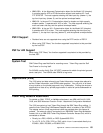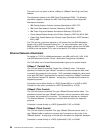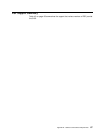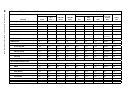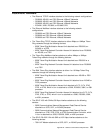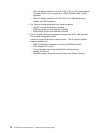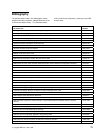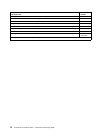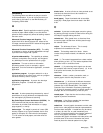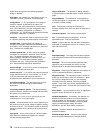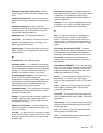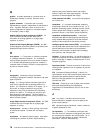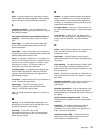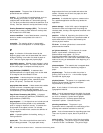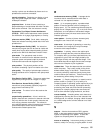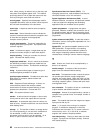
Glossary
The following terms are defined as they are used in
3130 documentation. If you do not find the term you
need, refer to the index or to the
IBM Dictionary of
Computing
, ZC20-1699.
A
adhesive label. Special-application material; typically
consists of paper labels coated on one side with an
adhesive mixture temporarily affixed to backing material.
See also
carrier
.
Advanced Function Image and Graphics. This
allows the 3130 to directly process IO1 subset of the
IO-image command set and GR1 subset of the graphics
command set data streams.
Advanced Function Presentation (AFP). The ability
of programs to use the all-points-addressable concept
to print text and images with a printer.
all-points addressability. The capability to address,
reference, and position text, overlays, and images at
any defined point on the printable area of a page.
application. The use to which an information
processing system is put; for example, a payroll
application, an airline reservation application, a network
application.
application program. A program written for or by a
user that applies to the user's work, such as a program
that does inventory control or payroll.
application programmer. A person who develops
application programs. Contrast with
system
programmer
.
B
bar code. A code representing characters by sets of
parallel bars of varying thickness and separation that
are read optically by transverse scanning.
Bar Code Object Content Architecture (BCOCA). An
IPDS command set that provides data control
information to print bar-code information on a page,
page segment, or overlay.
basis weight. The weight in pounds of a ream (500
sheets) of paper cut to a given standard size for that
grade; for example, 25 x 38 inches for book papers,
17 x 22 inches for bond papers, and other sizes for
other grades.
binder holes. A series of holes or slots punched at set
intervals that allows the form to be inserted in a
loose-leaf or ring binder.
bond (paper). Paper formulated with at least 80%
wood pulp. Bond-paper forms work best in the IBM
3130.
C
calender. A process to make paper smooth or glossy
by passing it through a series of metal rollers during the
last steps of a paper-making machine.
calender cut. Slits, glazed lines, or discolored lines
across the paper caused when wrinkles pass through
the calender rollers.
caliper. The thickness of forms. This is usually
expressed in thousandths of an inch.
carrier. The backing material for labels. Labels
consist of the printable material, the adhesive, and the
carrier.
chad. (1) The material separated from a data medium
when punching a hole. (2) The residue separated from
the carrier holes in continuous forms.
channel. (1) A path along which signals can be sent
(for example, data channel, output channel). (2) In the
3130 printer environment, the communication
attachment.
character. A letter, number, punctuation mark, or
special graphic used for the production of text.
character set. (1) A finite set of different characters
that is complete for a given purpose; for example, the
character set in ISO Standard 646, “7-bit Coded
Character Set of Information Processing Interchange.”
(2) A group of characters used for a specific reason; for
example, the set of characters a printer can print.
coated paper. Paper that has had a surface coating
applied to produce smoothness.
code page. A font library member that associates
code points and character identifiers.
coded font. A set of graphic characters to which code
points from a code page and character-representations
font have been assigned. A coded font may be stored
in a library for later use, or used immediately as a
collection of data that specifies the character pattern of
zero or more graphic characters. A coded font
associates the graphic characters with code points, and
provides some of the control information the printer
needs to place the character patterns on a page.
Bibliography 75



